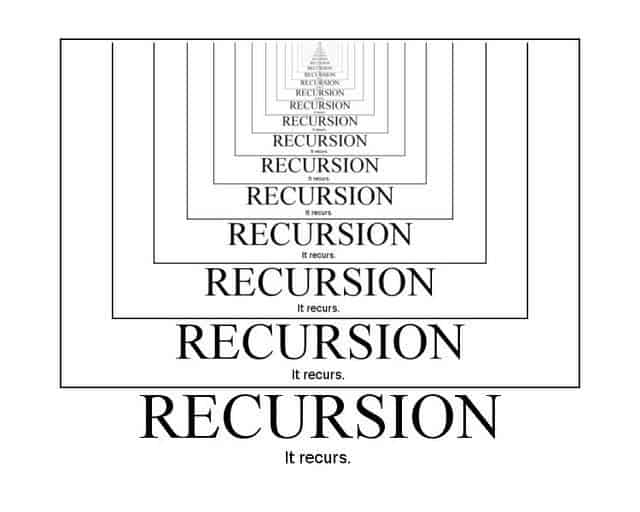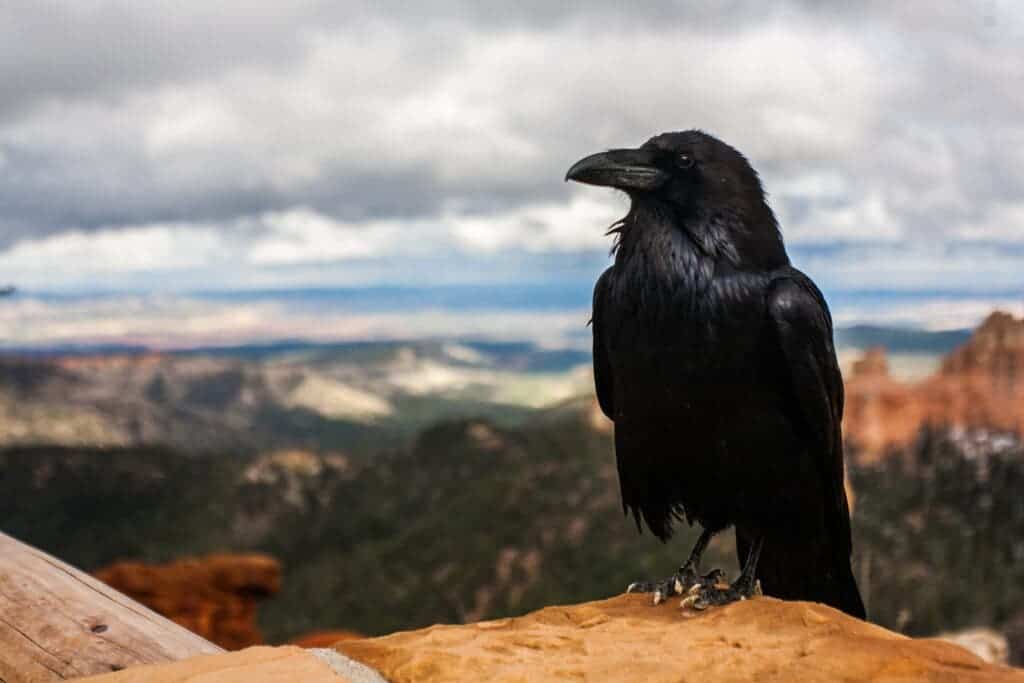Crows are smart; super, super smart. Not only can they build tools from memory and use them to work on other tools, but they even grasp the concept of zero. Now, crows have proven their ability yet again, showing they can handle a concept once thought unique to humans: recursion.

Recursion is a concept that makes its way into various fields, from programming to human language. Recursion emerges when you define something (whatever that thing may be) using the very thing you are defining as part of the definition.
In language, recursion also does some funny things. Take for instance the sentence “The mouse the cat chased escaped.” It’s not exactly the nicest-sounding sentence but while it’s a bit confusing, it still makes perfect sense. A human reading that sentence and trying to make sense of it would figure out that “the cat chased” is enclosed within “the mouse escaped”.
But not all creatures can do that. In fact, until very recently in 2020, it was thought that it was something only humans can grasp.
In 2020, a group of researchers taught both humans and monkeys to recognize and use recursion that used sequences such as { ( ) } or ( { } ) — the goal was to identify the bracket pair in a sentence made of symbols — choosing the parentheses in the sentence {()}, for example. Children that were 3-4 years old formed recursive sequences in 40% of trials, whereas in monkeys, 2 out of the 3 monkeys did the same thing.
This got Diana A. Liao and colleagues thinking. Couldn’t crows, who have already surprised researchers with their cognitive abilities, do the same thing?
They adapted the protocol for the 2020 study and taught crows to do the same thing. After teaching them the protocol, they tested whether crows can pick out the embedded characters better than a chance choice.
The study authors made it even harder for the crows: they added another character, allowing for sentences such as {[()]} — which reduces the chance that animals can simply memorize the sequence. Not only did the crows perform as good as children and macaques, but they did so without needing the extra training required by the monkeys.
“We presented sequences of bracket pair stimuli (e.g., [ ] and { }) to crows who were instructed to peck at training lists. They were then tested on their ability to transfer center-embedded structure to never-before-seen pairings of brackets. We reveal that crows have recursive capacities; they perform on par with children and even outperform macaques,” the researchers write in the study.
“These results demonstrate that recursive capabilities are not limited to the primate genealogy and may have occurred separately from or before human symbolic competence in different animal taxa,” they add.

While not all researchers are convinced regarding the significance of this study (and of the idea of grasping recursion in general), if crows truly are capable of this, it is particularly surprising as crows don’t seem to have a language like humans. This would suggest that they need recursion for another cognitive process, but what that process is is still unclear.
The implications of this are far-reaching. Birds don’t have a layered neocortex in the brian, like primates do, which suggests that this type of brain architecture is not necessary for displaying this sort of advanced cognitive ability. Since birds are demonstrating more and more advanced cognitive ability, which further hints that the ability to perform such processes either developed several times independently or is traced to an ancient ancestor.
Researchers now want to see what other animals could be capable of grasping this type of concept.
Journal References: Diana A. Liao et al, Recursive sequence generation in crows, Science Advances (2022). DOI: 10.1126/sciadv.abq3356






